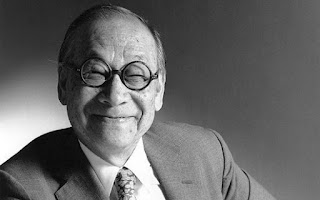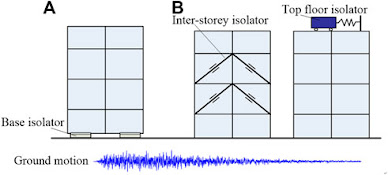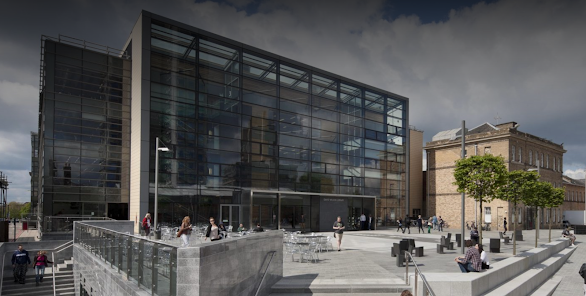final project: architect 4
Ieoh Ming Pei
Ieoh Ming Pei, or I.M. Pei, was born in 1917 in China and
immigrated to the US in the 1930s to pursue a degree in architecture. But when
World War II broke out, he was unable to go back to China by the time he
graduated. Rather, he remained in the US and eventually attained citizenship in
1954.
Pei's art endeavoured to unite the contemporary and the
conventional, referring to it as the "impossible dream." Pei's
creations are seen as a carryover of the International Style, which was made
famous by builders such as Le Corbusier. But Pei is also well-known for his use
of bold forms and utilitarian principles in his brutalism, an offshoot of the
International Style. For example, brutalism is evident in Pei's large,
rectangular concrete blocks, such as those used for his 1967-completed National
Centre for Atmospheric Research.
Pei, who called it the "impossible dream,"
attempted to bring the modern and the traditional together through his artwork.
Pei's designs are considered a continuation of the International Style, which
was popularized by architects like Le Corbusier. However, Pei is also
well-known for his brutalism, a branch of the International Style, which
incorporates strong forms and utilitarian ideas. Pei's large, rectangular
concrete blocks, used for his 1967-completed National Center for Atmospheric
Research, are a prime example of his brutalism.
(McGrath & Whitney, 2023)
REFERENCES:
McGrath, J., & Whitney, C. (2023, August 25). 16 World-Famous Architects and Their Impact. HowStuffWorks. https://science.howstuffworks.com/engineering/architecture/10-most-famous-architects.htm#pt9
Ieoh Ming Pei, or I.M. Pei, was born in 1917 in China and immigrated to the US in the 1930s to pursue a degree in architecture. But when World War II broke out, he was unable to go back to China by the time he graduated. Rather, he remained in the US and eventually attained citizenship in 1954.
Pei's art endeavoured to unite the contemporary and the conventional, referring to it as the "impossible dream." Pei's creations are seen as a carryover of the International Style, which was made famous by builders such as Le Corbusier. But Pei is also well-known for his use of bold forms and utilitarian principles in his brutalism, an offshoot of the International Style. For example, brutalism is evident in Pei's large, rectangular concrete blocks, such as those used for his 1967-completed National Centre for Atmospheric Research.
Pei, who called it the "impossible dream," attempted to bring the modern and the traditional together through his artwork. Pei's designs are considered a continuation of the International Style, which was popularized by architects like Le Corbusier. However, Pei is also well-known for his brutalism, a branch of the International Style, which incorporates strong forms and utilitarian ideas. Pei's large, rectangular concrete blocks, used for his 1967-completed National Center for Atmospheric Research, are a prime example of his brutalism.
(McGrath & Whitney, 2023)
REFERENCES:
McGrath, J., & Whitney, C. (2023, August 25). 16 World-Famous Architects and Their Impact. HowStuffWorks. https://science.howstuffworks.com/engineering/architecture/10-most-famous-architects.htm#pt9




Comments
Post a Comment